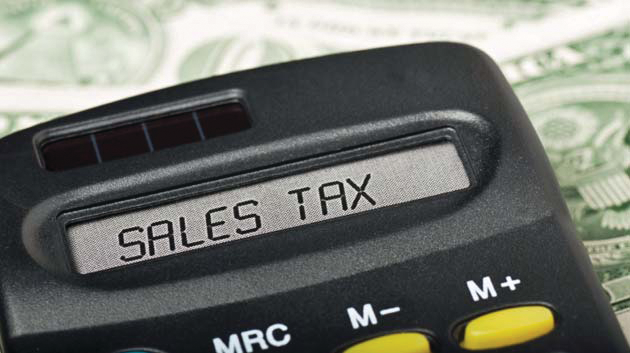Sales Tax
U.S. Sales Tax Rate Changes Reach 10-Year High
It's clear that tax departments will need to be nimble once again in 2024, adjusting to the situations outlined above along with other developments including legislative and regulatory changes.
Apr. 25, 2024

By Michael Bernard.
The domestic sales tax landscape in the United States has been in a constant state of flux over the last decade. Myriad circumstances including a lagging economy, restrictions around COVID-19, shrinking sales tax bases and reductions in federal aid for state and local governments have all led to 2023 seeing a 10-year high for sales tax rate changes.
In fact, the 2023 Vertex End-of-Year Sales Tax Rates and Rules report shows that a total of 444 sales tax rate changes took place across all U.S. state and local jurisdictions. Beyond that, the total number of rate changes as well as new sales taxes across all jurisdictions — 676 in 2023 — is second only to the 724 combined changes and new sales taxes that occurred in 2017. The 2023 number is also roughly 17% higher than the combined total for 2022, showing that this trend will likely continue into 2024.

Thanks for reading CPA Practice Advisor!
Subscribe for free to get personalized daily content, newsletters, continuing education, podcasts, whitepapers and more...
Already registered? Login
Need more information? Read the FAQ's
But the numbers only tell part of the story. A closer look shows that several trends emerged and contributed to the volatility and complexity of tracking and complying with indirect taxes in 2023.
Companies faced a barrage of district-level rate changes. Generally, around 100 new district taxes are enacted each year to fund fire protection, emergency services, hospitals and other services. As all of these new district taxes continue to accumulate, more and more tax jurisdictions are recalibrating their tax rates. In 2023, the number of rate changes jumped to 173, up threefold from 63 rate changes in 2022. Thankfully for taxpayers, many of those changes were decreases, but that doesn’t make those changes any less complex for tax teams tracking this information for compliance purposes.
Rate increases outnumbered decreases in cities and counties. Of the 76 sales tax rate changes that took place at the county level, 52 were rate increases and only 24 consisted of decreases — a nearly 2:1 ratio. At the city level, sales tax rate increases — 158 — outnumbered decreases — 35 — by almost 5:1.
States continue to issue new fees, exemptions and tax holidays. State and local jurisdictions continue to implement more fees, including everything from environmental “green fees” and retail delivery service fees to fees on transactions within airport and entertainment or dining districts. While these are not technically sales taxes per se, they pose similar challenges to indirect tax teams. In 2023, several states including Maryland and Pennsylvania implemented new green fees; Ohio, Tennessee, and Florida deployed new sales tax exemptions or updated their existing exemptions; and Minnesota brought on new delivery fees.
Since 2014, an average of 372 sales and use tax rate changes have occurred annually. But if you look deeper, you’ll see that the rate change increase most recently has been driven solely by districts. State sales tax rates have held steady or decreased slightly in the past several years, while the number of new district taxes has ranged from 115 to a staggering 237 in the past decade.
What does all of this mean for 2024? The short version is more of the same. However, the factors driving increases in new sales taxes and rate changes will evolve.
Current state fiscal conditions appear unsustainable. State and local fund reserves have been full in recent years due to pandemic-related federal relief. While this is positive news, there are signs that show the situation could change. With a shrinking sales tax base, widespread cuts to other funding sources (income taxes and property taxes), dwindling federal pandemic aid and the growing use of sales tax holidays, states will need to increase sales tax rates, implement new fees and extend sales taxes to new areas.
Sales taxes on services don’t seem likely for 2024. Despite half of U.S. gross domestic product being generated by services (both professional and personal), states have encountered incredible hurdles in attempting to tax those services. Not only is it a significant administrative lift — new regulations must be drafted, more auditors need to be trained and processes must be overhauled.
It’s clear that tax departments will need to be nimble once again in 2024, adjusting to the situations outlined above along with other developments including legislative and regulatory changes.
====
Michael Bernard is Chief Tax Officer at Vertex, Inc.
